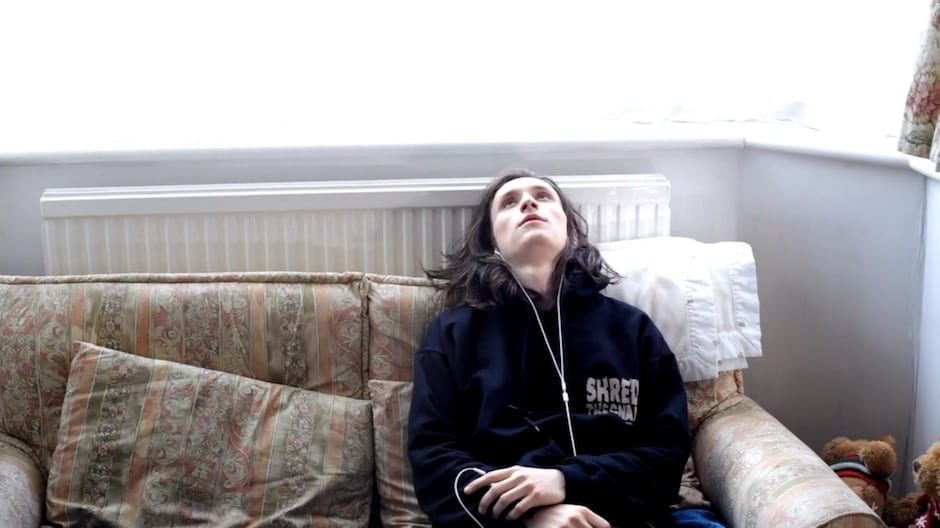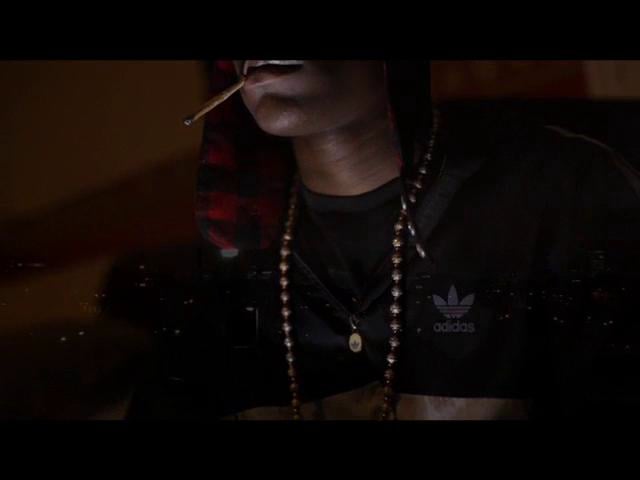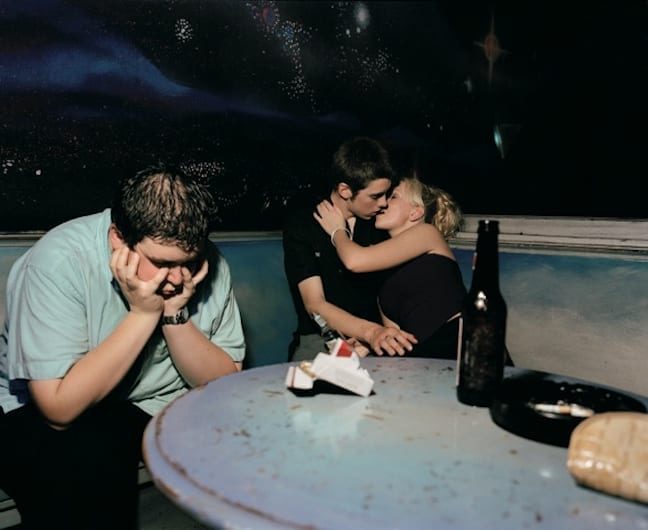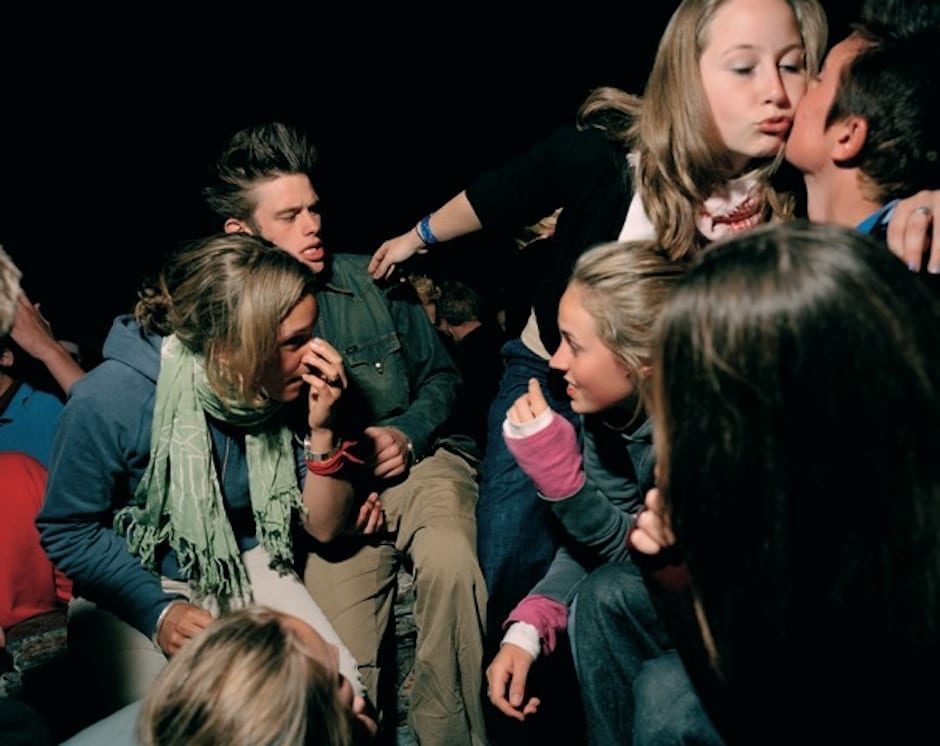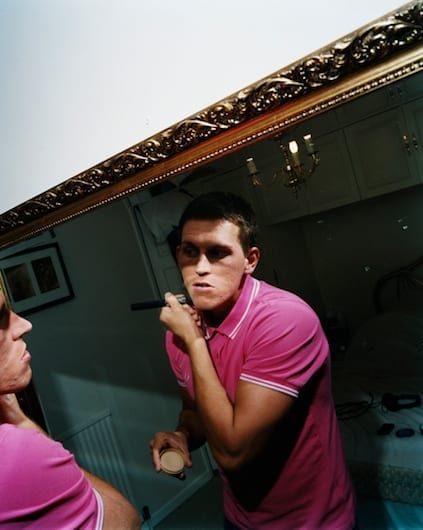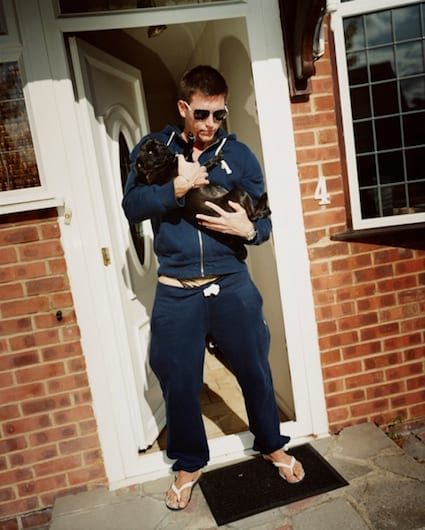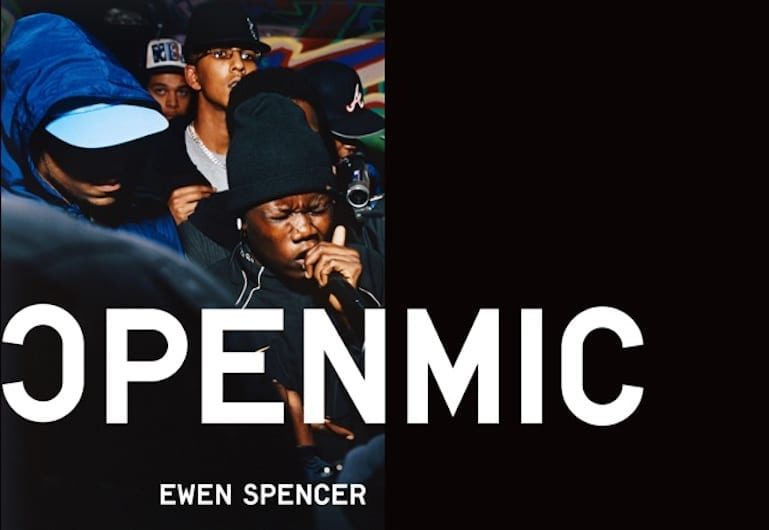There’s an ease you have with youth culture and gangs that is apparent in your photography as well as in the two music videos you have made. How did that intimacy between the photographer and the photographed come about? What led you to start documenting youth – were they your peers or were you an observer?
I believe that most creative people are making something biographical. My personal experiences of growing up are something I revisit in terms of looking at youth-culture. I’m interested in the way people define themselves at this point in life. It’s a huge adventure and for me it was a very exciting time. I was obsessive about style and music, most of my peers shared these interests.
It is as if these beginnings were a gateway into other creative areas. When I arrived at art college in my early 20s I was a bit older than most of my fellow students. I hadn’t picked up a camera “in anger” before I had arrived there. I wish I had learnt about photography maybe 10 years earlier as those times would have been interesting to capture in terms of style and attitude.
It was second nature to us to make sure we had the right jeans or shoes on and were wearing them in the right way or picking up on rare soul records, learning about graffiti on the New York subway system or asking people down South(I grew up in Newcastle Upon Tyne) to send us C90 recordings of the Tim Westwood show from Kiss Fm, then a pirate station. It was more than just being cool it was an education in itself and I’m still busy researching.
I realised early on once I had progressed to studying photography at the University of Brighton that I wanted to photograph my own, if you like, the people and places that I felt passionate about. That began with the Northern Soul scene around 1995 and by 2000 it had progressed to images of teenagers at play all around the UK and then the Grime scene around 2003-2005.
So I’ve gone from being involved in Sub-Cultures to photographing them and still being fascinated by their development and manifestations.
How would you compare the different ways of telling a story between your music video shoots for Naughty Boy and Massive Attack and shooting a fashion or editorial stills story?
Massive Attack was the result of a long-term stills project I made concerning young people who were defined by their post codes. A self imposed restriction on where they could and couldn’t go.
It was coming to a close as a project when Massive Attack’s production got in touch and a conversation began about what I had to offer and there was all this research and connection already in place so I delved back into this project and eventually focused in on one individual to make a biography about his day-to-day existence and what it meant to be from a cultural background like his. It was as much about a cultural pluralism as it was gangs etc.
The Naughty Boy piece was about a year later and I had been thinking about the idea of hip hop and its primary consumer in terms of middle class white kids – that cultural tourism that exists a lot in youth culture. White kids using patois, social linguistics these are all ways of defining yourself as a young person. In this case the individual is isolating himself and becoming consumed by the music he has discovered to the bemusement of his friends and his own environment. He’s trying to be rebellious in the confines of his safe existence but can’t really get there.
I recently travelled to Tokyo with a stylist I collaborate with to make a fashion story for his magazine called the Rig Out. There was a team of us making different projects for this next issue. I was looking for young people, sub cultures etc. I wanted to find some kids who would be in contrast to the perception we have of the Japanese people. Contained, proud, thoughtful. I street cast a group of skate punks who hung around Shibuya, the very place I wanted to shoot. They were nasty, drunk, outlandish, head-case kids who were up for hi jinx and I loved working with them for that one evening. The stylist dressed them accordingly and we just travelled around their haunts having party…we ended up having a close shave with a Yakuza guy and experiencing them perform some Tokyo hip hop in a Karaoke bar.
What’s your process for coming up with creative and narrative ideas?
The process is reflecting upon my own experiences growing up. On the whole there are a lot of great memories growing up in the North East in the 1970s/80s. So I can often borrow from people I grew up with or around. I write in the first person and keep it quite simple. I like to shape a character and sometimes use little motifs to help define the relationships around them.
What do you think about when you are framing a shot?
I don’t I think too much when framing I think about the available light and any light sources I may be using. I’ve been making pictures so long that I just respond to an environment and it all comes together. It’s always about the people in the frame so whatever is going to compliment them and what they are doing.
Did you have formal training or are you mainly self-taught?
I studied on a mainly theoretical course and like any good educational experience you learn a lot from your peers. I hadn’t begun to use a camera until I was in my early to mid 20s. So it was quite a quick process. I learnt how to process and print in black and white and then colour. I used to make all of my own prints and a few in the Open Mic book are mine. My tutors at Brighton were both practicing photographers who I had a greet deal of respect for and they would show me techniques occasionally. Besides that I just got on with making pictures all of the time.
In terms of directing I have gained experience from making commercial pictures for clients or fashion stories. It’s a good way to learn how to motivate and communicate with people what you would like to achieve. You begin to develop little techniques and understand how to cast people.
Vol 2 of Three’s A Crowd was published this month, the final book of your images that document the White Stripes from being a little known garage blues band playing Bristol clubs to their stadium concert tour in South America. Do you have any more books planned?
Publishing books is a labour of love. I’ve never worked with a publisher and I have self-published three books in the last six years. Before I had made pictures with The White Stripes I was making pictures around the UK with groups of teenagers very generic groups based on their backgrounds more than anything else. Some kids were more affluent some more working class.
The idea was to capture UK youth at play, going through their courtships and recreations. The themes have a great sense of communication because the majority of us have been in these places at one time or another. It’s a much more far reaching project than the White Stripes or the Grime scene for instance, that is possibly a more inaccessible aspect of youth culture but one that was very well received in my book Open Mic. I’d like to publish the teenagers pictures. They’ve been revisited recently and a few galleries will show the project over the coming year. Id love to publish a book concerning this work but I think I’d like to work with an editor and possibly a small publisher to put this work out. Lets see?
What has the last decade of taking pictures taught you?
Stick to what you love and try not to get distracted. I enjoy making pictures around the subject matter of my choice for a good reason. Also it’s good to turn things down sometimes. I’ve overdone it on a couple of occasions and taken too many projects on and it’s not worth it over time. I feel some photographers who I used to admire have spread themselves thin and produced too much work.
I think it’s also essential to have an opinion. Over the last five-six years I have noticed a trend in photography that is very dry and non-committal. Far too much polite objectivity and not enough voice. It can become very boring looking at these environmental, landscape type works. There are so many people shooting in this way and the work says very little actually. Unfortunately they are very easy for curators to put on their walls and sell. So I can see no end to it for a little while yet. Maybe the William Klein and Daido Moriyama show at the Tate will stir things up a little later on this year.
Do you know when you’ve taken the perfect shot or does your relationship with the image often change in the edit?
Yes it changes as soon as you’ve had the film processed then there is the edit, then there is leaving your images a long time and revisiting them in the same way I am re visiting the teenagers pictures at the moment. I haven’t looked back at some of these pictures for around 10 years and I’m extending the collection now. I’ve aged and so have the images and I’m pleased to say I think we’ve both got better over time.
When you shot the music videos did you storyboard the films?
I didn’t no. I think I’d like to with other work in the future. The main reason I didn’t storyboard is because I handled the cameras so I shot everything thing as well as being very hands on in terms of the production. So I had my shots and a narrative worked out before I started but not drawn out like a storyboard. I have kept the unit very small on purpose so it’s very easy to communicate exactly what I’m trying to achieve. Over time this will change and I’m sure storyboards will be very useful.
LINKS:
Read Tim Nash’s blog entry on Ewen Spencer. We love it.
Spencer has an opening in Glasgow on February Saturday 18th for the Teenagers work at Repositioned Gallery.
